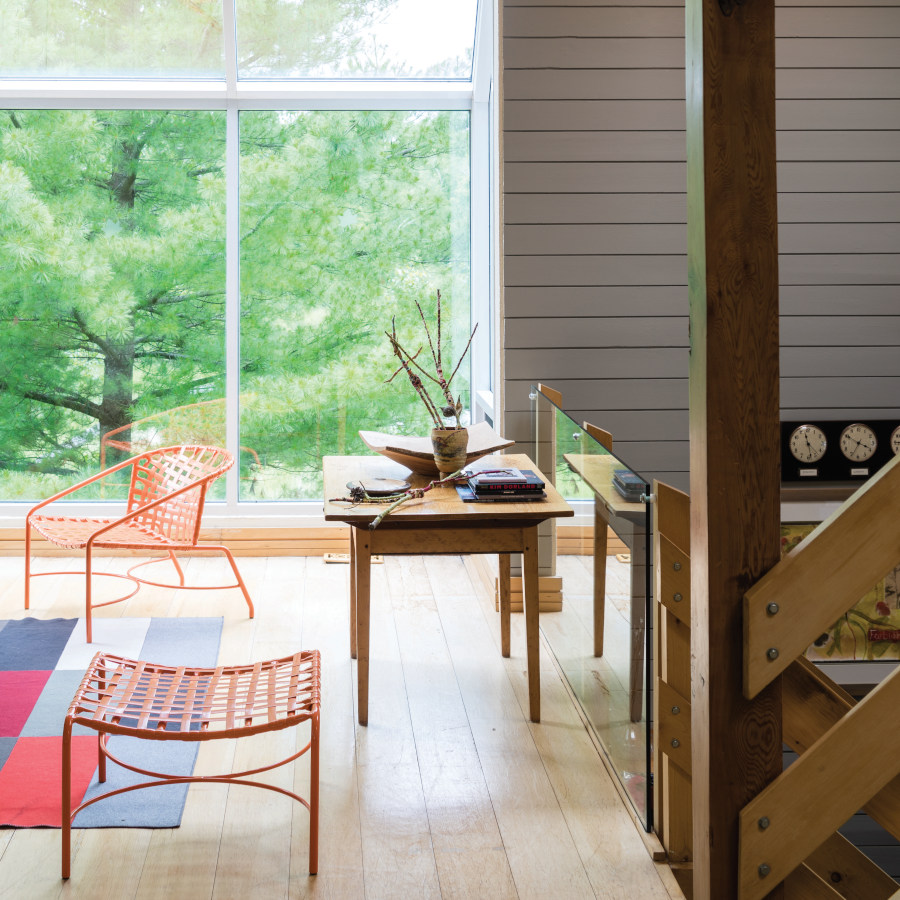Repainting Old Wood Panelling

With a new coat of paint in a matching colour, aged wood panelling can look fresh in no time at all and suddenly appear ultra-modern. We explain the few steps that are necessary to turn old wood panels into a design highlight.
Content
What is the advantage of painting wood panelling?
Picture gallery with room examples
Instructions: How do I paint wood panelling?
Until the 1990s, many ceilings and walls were panelled with wooden panels. Today, they are often perceived as no longer matching the current furnishing style. This may also be due to the fact that many older softwood pine panels have a slight yellow tinge after a few years or have been painted with dark glazes that no longer match today's furnishing style.
Wooden panels have therefore often been removed in recent years. Wrongly so, because wood panelling has enormous design potential. This potential can easily be exploited with a new coat of paint. It is therefore no wonder that English and Scandinavian interior design has always used colourfully painted wood panelling as an important design element, as it can be perfectly combined with mid-century vintage and Nordic design.
What is the advantage of painting wood panelling?
With a new coat of paint in a matching colour, outdated panels look fresh in no time at all and suddenly appear ultra-modern. Wooden panels with a top coat of paint turn the wall into the highlight of the room: the tongue and groove boards create an interesting interplay of light and shadow and add visual depth to the room. If the panelling on the ceiling or wall also has coffered elements, these can be set off in colour and make a further design statement.
If the wall panelling and a shelf placed in front of it are painted in the same shade in the sense of colour drenching, this creates a further accent in the room that ensures a harmonious overall effect.
But colour-painted wood panelling not only has a high design value visually. If they are painted with robust, ultra-matt lacquers such as Dead Flat from Farrow & Ball or the silk-matt Intelligent Eggshell from Little Greene, they are also extremely easy to clean and resistant to cleaning. In the spirit of sustainability, they therefore do not need to be renewed as often as unpainted, painted walls. In addition, wood panelling improves the room acoustics.
The picture gallery shows you some photos with painted wood panelling. Only Farrow & Ball colours were used to paint the panels.










To the colours from Farrow & Ball
How do I paint wood panelling?
To begin with: all panelling, whether untreated, glazed or painted, can be painted, including foiled wall panelling. A convincing result can be achieved in just a few steps:
Step 1: Sanding the wood panelling
It is sufficient to lightly roughen the surface. To do this, simply sand the panelling briefly with 120 to 180 grit sandpaper.
Foiled wood panels can be painted immediately with the primer without sanding.
Step 2: Priming the wooden panels or foiled panelling
Priming is important. A single coat of e.g. Farrow & Ball Wood Primer & Undercoat or Little Greene Intelligent All Surface Primer is sufficient. These primers are suitable for both wood panels and foiled panelling.
Step 3: Intermediate coat and final coat of wood panelling
After priming, the first coat, the so-called intermediate coat, is applied, followed by the second coat, the so-called finishing coat. For the intermediate and final coat, you can choose between lacquers from Farrow & Ball, Little Greene, Sanderson, Zoffany, Morris & Co. or Paint & Paper Library, depending on the desired colour shade and gloss level.
Tip: If you are painting panelling made of raw wood, we recommend lightly sanding the surface again after the intermediate coat and only then applying the final coat. The reason: With raw wood, the first coat straightens the wood fibres, resulting in a slight roughness. Subsequent light sanding ensures that the surface becomes smooth again.
Subscribe to the MEINEWAND blog
Never miss another blog post again!
We'll keep you informed by e-mail of each new blog post.
Image Source: Farrow & Ball


